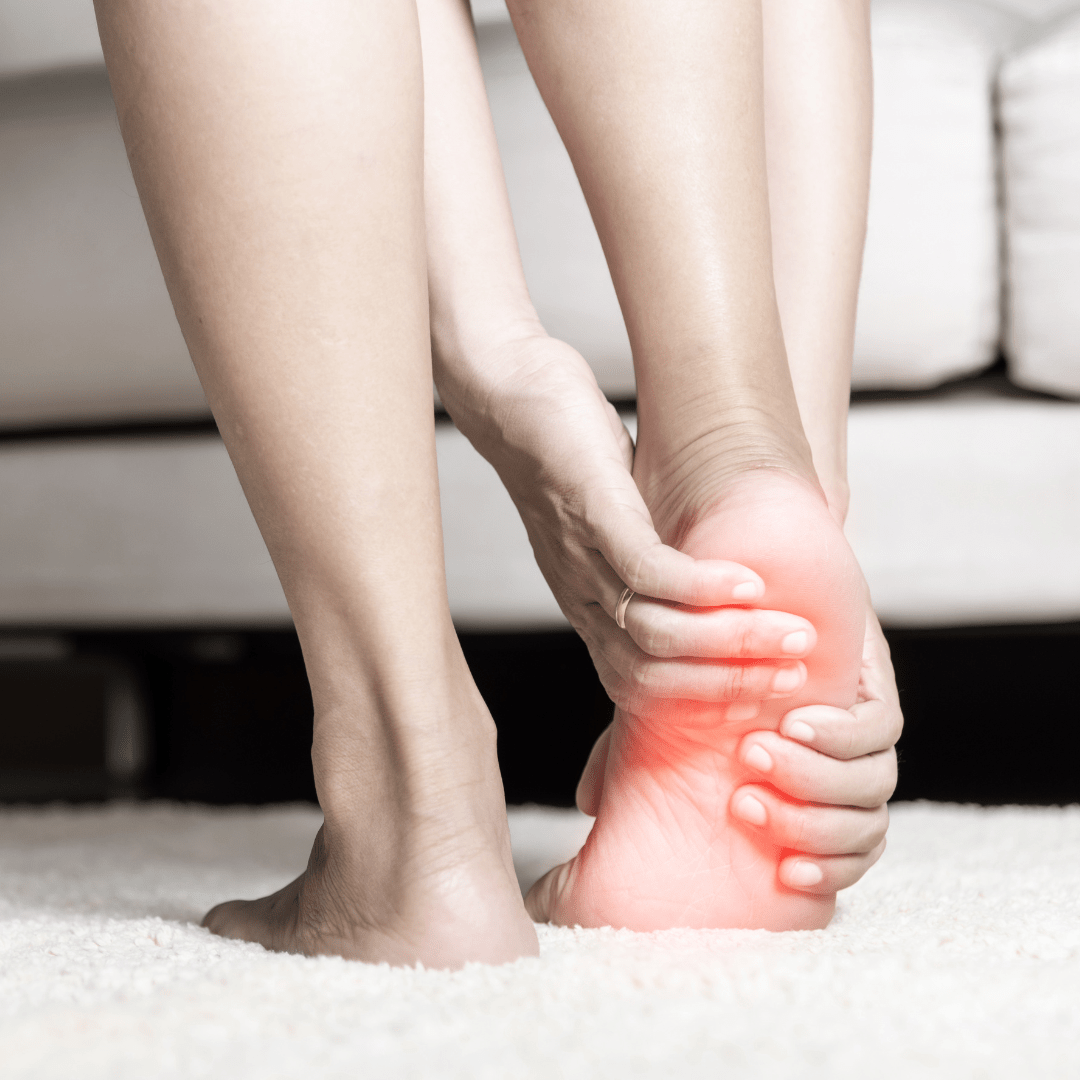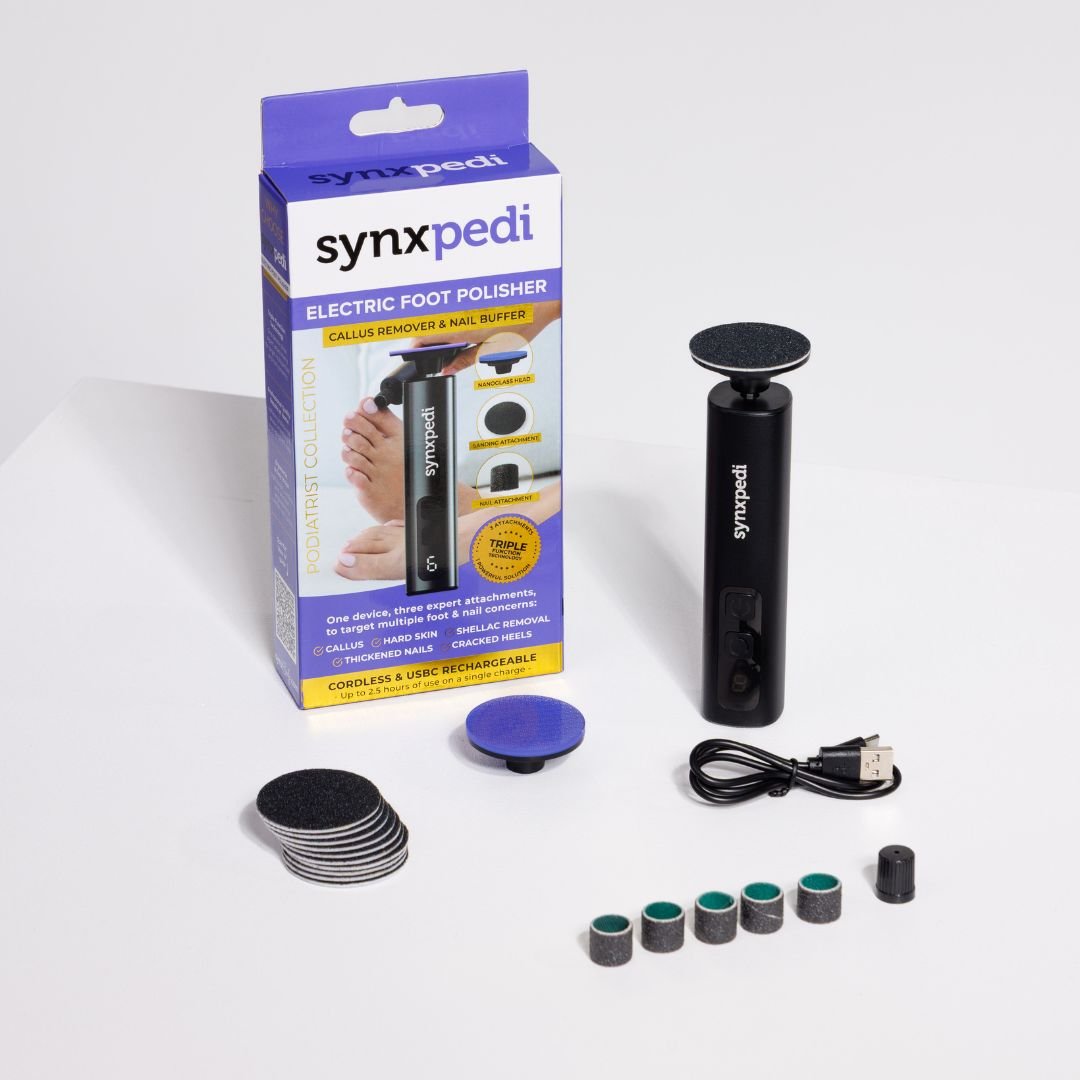What is Plantar Fasciitis? Plantar fasciitis is a common cause of heel pain, affecting many people, especially those who are physically active or spend long periods on their feet. It occurs when the plantar fascia, a strong band of tissue running along the bottom of your foot, becomes inflamed or damaged. This tissue connects your heel bone to your toes and plays a key role in creating the arch of your foot.
Symptoms of Plantar Fasciitis The hallmark symptom of plantar fasciitis is pain under the heel. This pain can range from a dull ache to a sharp stabbing sensation. Other symptoms may include:
- Aching or burning on the sole of the foot
- Swelling in the heel area
- Pain that's worse in the morning, especially during the first steps of the day
- Discomfort after prolonged sitting or standing
- Increased pain after intense activity
What Causes Plantar Fasciitis? Plantar fasciitis can develop for various reasons, particularly from activities that place excess stress on the heel and foot, such as:
- Running, dancing, aerobics, or jumping sports
- Flat feet or high arches
- Sudden increases in physical activity
- Being middle-aged or older
- Pregnancy or being overweight
- Wearing shoes with inadequate arch support
- Spending extended periods on your feet
- Having tight or weak calf muscles
A heel spur, an extra bone growth on the heel is often associated with plantar fasciitis, although many people have heel spurs without experiencing any pain.
How is Plantar Fasciitis Treated?
- RelaxaPulse Vibrating Massage Roller: The RelaxaPulse is a Plantar Fasciitis vibrating massage roller designed to release tight muscles, boost circulation, and relieve tension in various parts of the body. Its unique textured design works to alleviate discomfort, including plantar fascia pain. Key benefits include improving flexibility, aiding muscle recovery, and reducing stress. It can also be used on other areas such as the lower back, hips, and calves, making it a versatile tool for managing plantar fasciitis.
- Foot & Ankle Compression Sleeves Synxplus foot & ankle compression sleeves are designed to reduce swelling and inflammation while alleviating pain associated with plantar fasciitis, heel spurs, Achilles tendonitis, and arch pain. The compression can improve circulation, support healing, and enhance mobility by offering targeted support to the heel and arch.
- Gel Heel Cushions: Synxgeli Gel heel cushions offer excellent shock absorption, protecting the heel and Achilles from excess pressure. They can help treat plantar fasciitis, heel spurs, and Achilles tendinopathy by cushioning and reducing stress during walking or standing. The slim design ensures comfort in various footwear, from casual shoes to athletic gear.
- Magnesium Recovery Spray: Synxeaze Magnesium Recovery Spray is a plant-based formula designed to soothe sore muscles and joints. Magnesium is known for its ability to promote muscle relaxation and ease cramps, making this spray an excellent choice for individuals dealing with plantar fasciitis. It can be applied daily to reduce muscle tension and enhance overall mobility.
- Synxsole One Stop Insoles Designed by podiatrists, these orthotic insoles provide targeted support to reduce foot and ankle stress. They are highly effective in managing plantar fasciitis by gently supporting the arch and realigning the foot. With a patented design and slimline profile, they fit a wide range of footwear and ensure comfort while reducing strain on the plantar fascia.
Additional Tips for Managing Plantar Fasciitis
- Dry Needling: Using acupuncture needles to release tight and triggered muscle fibres. That can relieve pain and improve function.
- Laser Therapy: Low level laser is a painless therapy used to release tight muscles and tissues. Works by reducing inflammation, swelling and pain in the area.
- Joint Mobilisation: A podiatrist or physiotherapist can help to mobilise the joints in your foot and ankle to improve mobility and function and relieve pain.
- Shockwave Therapy: is a non-invasive treatment that helps to stimulate regeneration of tissue and accelerate healing.
- Cortisone Injections: By injecting cortisone, an anti-inflammatory into the localised area we can reduce pain, swelling and inflammation.
- Stretching and Strengthening Exercises: Regularly stretching your calf muscles, Achilles tendon, and plantar fascia can relieve pain and prevent future flare-ups.
- Footwear: Wear shoes with proper arch support and cushioning, especially if you spend a lot of time on your feet or engage in high-impact activities.
- Rest and Ice: Take breaks from activities that stress your foot, and apply ice to reduce inflammation and pain.
- Massage Therapy: Using a massage roller or manual techniques can help release tension in the foot muscles and boost circulation.
In Conclusion Plantar fasciitis can be a frustrating and painful condition, but with the right treatments and lifestyle changes, it’s possible to find relief. Incorporating podiatrist recommended Plantar fasciitis products into your routine can make a big difference in managing symptoms and promoting recovery. These products are designed to target the causes of plantar fasciitis while offering relief, support, and comfort, helping you get back to a pain-free life.






